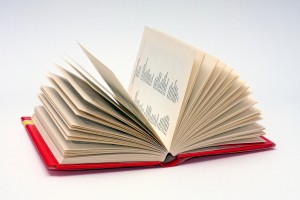There are a lot of acronyms, odd spellings and strange words tossed around in the freelance world.
Since Google Translate won’t work when you get an email that says: “We’re interested in TK Ways to Lose Weight Fast. How about an FOB on spec? FNASR, 25 percent kill fee,” a freelance dictionary will come in handy to decode editor-speak.
Here are some of the most common terms used in journalism:
Byline: The writer’s name on the article.
Clips: Examples of your published work. These may be links to articles published on websites or copies of articles that appeared in magazines. Editors often ask for clips to see what kinds of articles a writer has published and get an idea of their voice/style.
Coverline: The teasers and titles that appear on the covers of magazines: 10 Health Habits that Scare Doctors, Essential Green Cleaning Tools, Winter Skin Remedies are some examples. Coverlines are meant to entice readers to buy the magazine.
FOB: Refers to the “front of the book” or the articles that often appear at the beginning of the magazine. As a general rule, these articles are typically short – under 500 words. These articles are just as thoroughly researched as longer pieces and require interviews with experts. BOB is similar, referring to the short articles that appear at the “back of the book.”
Fresh: The freelancing version of the “F word.” Editors want tips, sources and ideas that are fresh, not seen before in their magazine or their competitors. You can often accomplish a fresh spin by using information from new studies or interviewing experts who have published new research or new books.
Kill Fee: A fee offered to the writer when an editor “kills” the article or decides not to publish it. The amount of the kill fee ranges depending on the magazine but is usually a percentage of the total fee.
LOI: Acronym for Letter of Introduction. Unlike a query, which offers a specific idea, an LOI serves as a general overview of a writer’s expertise and publication credits. LOIs are most commonly sent to editors of trade or custom publications.
Masthead: The listing of editors’ names and titles, usually in a box near the front of the magazine. It’s presented as a hierarchy, with top editors listed first.
Query: A short letter that introduces your idea to an editor. It’s the expected format for communicating ideas and landing assignments. Also called a pitch. There are four things you should never say in a query.
Sidebar: A story that accompanies the main article, often in a box that stands out on the page. It highlights a specific aspect of an article. In a piece about the health benefits of yoga, a sidebar could include descriptions of three yoga poses. An article about healthy lunch options for kids might include a sidebar of new lunchbox designs.
Spec: Refers to submitting an article without a contract or the guarantee of publication. Writers are asked to submit the entire piece and the editor will decide whether or not to buy the piece. It’s common for essays. May also be referred to as “on spec.”
TK: Means “to come” and can be used in a query to indicate that certain facts – like the number of tips – will be filled in depending on the details of the assignment. For example, “TK tips to grow better tomatoes” or “TK days to thinner thighs.” TK should never be used in an assignment that is turned in to the editor because it indicates information is still missing.
TOC: An acronym for table of contents.
Trade Magazine: A magazine aimed at a specific group or industry. Most industries have their own trade magazine. They are available through associations or membership organizations and cannot be found on newsstands.
What industry specific terms have you encountered as a freelancer?

Very helpful!